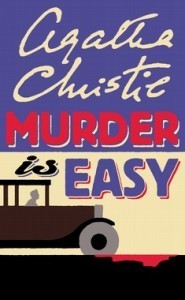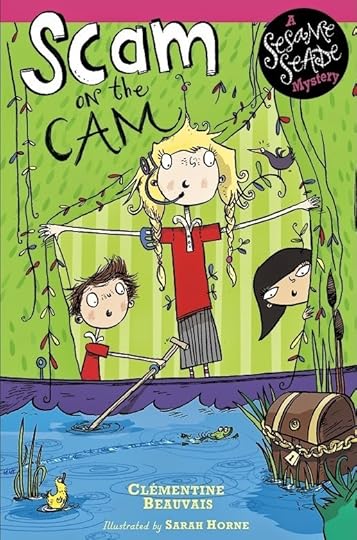My Writing Process
[image error]Murder Most Unladylike is getting closer every day! There’s just over one month left until readers in the UK and Ireland will be able to get their hands on it in actual bookshops (I recommend this method of purchase. Support your local booksellers!). My author copies have arrived, and I can confirm that the book is beautiful. I’m going to be hosting a UK-only giveaway on this site very soon, and I hope you’ll all play along.
In the meantime, though, I’ve been tagged by two fantastic writers, Helen Moss, author of the Adventure Island books, and Melinda Salisbury, author of The Sin Eater’s Daughter, to answer four questions about my writing process.
Below are my answers – featuring Wells & Wong 2: Arsenic for Tea, my (surprising) dislike of gore in books and TV, and why I think it’s so important for writers to have good (and very critical) first readers.
1. What am I working on?
I’ve just handed the second draft of Wells & Wong 2, which will be called Arsenic For Tea, to my editor – a scary moment, as this is the first time she’s seen it! Because these books are mysteries, we all agreed that it would be best if I worked out the plot with my agent and sent early drafts to her only. I’ve waited to give a script to my editor until I had something complete that I was happy with, so she could try to guess the murder the way any reader would. Now I’m wondering if I’ve managed to fool her!
 I’m not done with Arsenic For Tea by a long stretch – judging by Murder Most Unladylike, I’ve still got at least two rounds of structural edits to go before I even get to the line edit or copyedit stage – but while I wait for my editorial letter (the notes from my editor about what she’d like me to alter) I’m starting to think about Wells & Wong 3. I’m really bad at not writing – storytelling is how I calm down and step back from the world – so I’ve already got early plots and characters floating around my head. For this story, I’m considering stabbing someone – which is something that only a writer can say without getting arrested.
I’m not done with Arsenic For Tea by a long stretch – judging by Murder Most Unladylike, I’ve still got at least two rounds of structural edits to go before I even get to the line edit or copyedit stage – but while I wait for my editorial letter (the notes from my editor about what she’d like me to alter) I’m starting to think about Wells & Wong 3. I’m really bad at not writing – storytelling is how I calm down and step back from the world – so I’ve already got early plots and characters floating around my head. For this story, I’m considering stabbing someone – which is something that only a writer can say without getting arrested.
I’m also (didn’t I say that I was bad at not writing?) revising something I wrote at the end of last year that’s not Wells & Wong related at all. It’s not set in the 1930s, and it’s not even a mystery – although there is certainly a murder involved. I seem to have difficulty writing a book without at least one suspicious death in it. I’ve recently had a revelation about a fix to part of the plot that I’d been struggling with, and now I’m getting excited about putting it down on the page. That’s my favourite thing about writing – that brainwave moment when you see how a story could be made to work better.
2. How does my work differ from others of its genre?
I’m a huge detective fiction nut, and Murder Most Unladylike is definitely a tribute to all of those closed-system murder mysteries by people like Agatha Christie, Dorothy Sayers, Ngaio Marsh and Josephine Tey. But when I began reading murder mysteries aged 12, I could never understand why there were so few characters my age. I knew that, if I found myself in a murderous situation, I would be an excellent detective – and so I think I created Daisy and Hazel to be the characters my 12-year-old self was missing.
 The girl detective is having a real moment right now, which I love. There are so many fantastic female leads in kidlit and YA at the moment who solve problems with intelligence and determination – a few of my favourites are Laura Marlin, Sesame Seade, Mariella Mystery and Poppy Sinclair – and I’m glad to add Daisy and Hazel to their number.
The girl detective is having a real moment right now, which I love. There are so many fantastic female leads in kidlit and YA at the moment who solve problems with intelligence and determination – a few of my favourites are Laura Marlin, Sesame Seade, Mariella Mystery and Poppy Sinclair – and I’m glad to add Daisy and Hazel to their number.
3. Why do I write what I do?
Murder has always fascinated me, which sounds really grim – I watch every crime drama going on TV, I’m obsessed with crime fiction and I’ve never written a book yet that hasn’t featured violent death in some way. It’s slightly odd, because as a person I’m intensely peaceful. I can’t bear violence – when I read I have to skip over gory passages, otherwise I begin to actually feel like I’m being hurt in the way described in the book. I think I’m so curious about murder because it’s something that I could never do: I’m endlessly interested in imagining what might drive someone else to it. It doesn’t make sense to me, so I have to keep picking away at the problem until it does!
 I think that’s why I love the way detective novels turn something as horrible as death into a puzzle. The set-up is so neat and complete, and authors have to be so economical with detail. In a detective novel, nothing can be truly random, and no piece of plot can be introduced that isn’t neatly tied up during the denouement. When I started working on Murder Most Unladylike, I think I was setting myself a test, to see whether I could create my own murder mystery, something set in the 1930s that wasn’t anachronistic but at the same time didn’t have some of the more awkward assumptions of a Christie novel.
I think that’s why I love the way detective novels turn something as horrible as death into a puzzle. The set-up is so neat and complete, and authors have to be so economical with detail. In a detective novel, nothing can be truly random, and no piece of plot can be introduced that isn’t neatly tied up during the denouement. When I started working on Murder Most Unladylike, I think I was setting myself a test, to see whether I could create my own murder mystery, something set in the 1930s that wasn’t anachronistic but at the same time didn’t have some of the more awkward assumptions of a Christie novel.
4. How does my writing process work?
I’m always thinking about the stories I write – the characters and their plots go round in my head all day. I think that’s why, when I actually sit down to write, I can churn out words very fast. I write every weekday morning for an hour, while I’m sitting on the train on my way to work. In fact, that’s how I wrote most of this blog post! I have to write on my laptop (I have a very little one that fits in my handbag), although I do make a few scrappy notes on paper before I begin each book. I can type up to 1,000 words on one journey – and when it comes to revisions I can revise fast as well. The edits, once I get into them, are (weirdly) my favourite part of the process – altering facts about my plot and characters makes me feel like I’m doing a secret magic trick.
With Arsenic for Tea I began by sketching out a plot. I worked out a cast of characters, gave them all motives (several of these changed over the course of my planning – I always over-complicate when I’m first making things up, and have to tone it down when I realise that my plot doesn’t make sense) and picked a murderer. Then I drew up a VERY nerdy spreadsheet of where all of my characters were at specific times. I love spreadsheets – they make plotting out a mystery easy!
I ran what I had past my agent Gemma, and she got me to talk through all of my characters and motives. She pointed out what was and wasn’t working – and got me to make a lot of simplifications. I’m very lucky to have an agent who likes to work editorially with her clients – her help gave me a much stronger basis for the book. By the time I sat down to write my first draft, I already felt very confident about my characters and my plot – I didn’t feel so much like I was writing blind!
That first draft took me about four solid months’ work. Then I read through it, tweaked it, and sent it to my first readers: my agent, my crit partner and my mother. I got their comments back, pondered a bit, realised they were utterly right and did a really deep-level edit that took about a month and a half – new scenes, new motives and a very different dynamic between Daisy and Hazel. Now I’ve just sent that new draft off to my early readers (again) and my editor Natalie (for the first time).
Natalie is so great (as are all the others) at asking big, awkward questions that I haven’t been able to face, or don’t know that I should be asking. Why is something that way? What use is that character? Do they need to be there? Would it be better if they had a different role altogether? Why don’t we see that scene? It’s always tempting to protest that it that way BECAUSE IT JUST IS, OK! – but a few moments’ thought always makes me realise that they’ve got a serious point. I love being edited – it helps me get at the really good, sleek story that’s lurking underneath the slightly messy early draft that I’ve produced. It’s a really exciting process, and I can feel the book getting better with every revision.
[image error]And then, once the structural edits are done, it’s onto the line edit, the copyedit and the first page proofs. It’s been amazing seeing Murder Most Unladylike become a real book – but at the same time, I’ve discovered that my favourite part of the process is the bit where I get to take something fairly good that I’ve written and work magic on it to make it awesome.
And now, time to pass on the baton! I’m tagging Ellen Renner, author of Tribute, and Clementine Beauvais, author of the Sesame Seade Mysteries. Head on over to their websites to read their responses to these questions – they should be up some time next week.
And remember to stay tuned for more Murder Most Unladylike news, giveaways and interviews. The 5th of June isn’t so far away at all!



